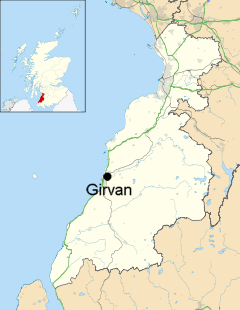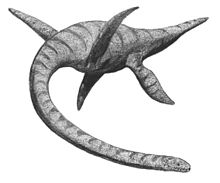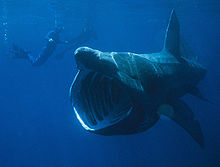
Contact

Home
International Sea Serpent Reports
New Sea "Monster" Comes To Scotland
The Sunday Herald (Sydney, NSW)
Date: August 30, 1953
Page Number: 4
From Our Staff Correspondent
LONDON, August 29.
The 5,000 people of the placid fishing village of Girvan, on the coast of Ayrshire, West Scotland, are on the hunt for a prehistoric monster.
They firmly believe they have seen one swimming off shore during the last few days, searching for its lost mate.
The mate, they say, was a grotesque 30ft monster washed up on the beach on August 15.
The beast, left by the tide on rocks, had a four-foot "giraffe neck," a camel-shaped head with bone-shielded eyes, four stumpy appendages like legs, and a 12-foot tail.
According to the Provost (Mayor) of Girvan, Mr. D. M. H, Smith, the beast also had "the intestines of a mam- mal, mon, so it could nae have been ony feesh, ye ken."
BURNT BEAST
All Girvan flocked to gaze at the creature, thrilled by the thought of having acquired a plesiosaurus, a marine reptile active millions of years ago.
The Scottish papers, remembering it was 20 years since the birth of the still elusive Loch Ness monster, made Girvan front page news the next day, and Fleet Street (London) papers carried stories and pictures.
Experts were hurriedly summoned from Edinburgh, but before they could arrive at Girvan, the people, revolted by the smell, had poured oil on the beast and burnt its whole carcass, except the head.
That had unaccountably vanished almost before their eyes.
From photographs taken before the burning, the thwarted experts decided Girvan's "missing link" was a
basking-shark that had died a natural death in the sea, but had been battered by rocks and half eaten by other sea creatures. They returned to Edinburgh disappointed.
But in London, the famous zoologist, Professor Julian Huxley, could not dismiss the affair so lightly.
"It was a grave mistake to destroy the creature," he said. "The long neck, tail and legs were most unusual.
"I would welcome fragments of jaw bones and feet for analysis."
Local people believe they have now solved the mystery of the absent head—it may be on its way to Professor Huxley under the arm of Tony McTaggart, 60, a wartime liaison officer with General de Gaulle.
HELPED HIMSELF
McTaggart, a tall bearded man in a black Astrakhan hat, is a local recluse, who is reported to have been seen putting the monster's head into a sack on the beach. He is now missing from his cottage.
The Provost, Mr. Smith, also confessed he had helped himself to some of the monster before it was destroyed —a part of the backbone, which he has sent to London for analysis.
This week-end lookouts on the harbour wall and the sloping green hills behind Girvan are maintaining a non-stop vigil for the next appearance of the monster's mate, while the village has become a trippers' paradise.
Thousands are booked to go there by train and road, a local manufacturer is turning out women's scarves with a monster pattern, and outsize potatoes are being sold as "other Girvan monsters."
So-called fragments of the remains will be sold to the highest bidders.
Skipper "Geisha" Sloane, who was the first man to see the strange creatures in the Clyde, will run hourly hunts for the monster in his ketch Amethyst, with 12 passengers at 10/ each.
Girvan, Scotland

A Village Loved Its Monster
The Sunday Herald (Sydney, NSW)
Date: September 13, 1953
Page Number: 12
THE 5,000 PEOPLE of Girvan, a placid fishing village on the coast of Ayrshire, Scotland, are mourning the final passing of their monster—and the end to fond hopes of prosperity conjured up by that seven-day wonder.
WHEN the remains of a "fantastic" creature were washed up on Girvan beach last month it was hailed as a survivor from a prehistoric era.
It was "35ft long, covered with horse-like hair, had a 4ft giraffe neck, a camel shaped head, with bone shielded eyes, four stumpy legs, and a 12ft tail."
"It's a Plesiosaurus," declared the local authorities, meaning the marine reptile that was active millions of years ago.
The Provost (Mayor) of Girvan, Mr. D. H. M. Smith, was quoted as saying: "It has the intestines of a mammal, mon, so it could nae be a feesh, ye ken."
Trippers went to Girvan in their thousands, and villagers began reaping a rich harvest selling souvenirs.
Skipper "Geisha" Sloane, a local fisherman, ran hourly hunts for the monster from the local quay in his ketch Amethyst, carrying each time 12 passengers at 10/ each.
Then came experts from Glasgow University, led by young Professor James Parry, Lecturer in Zoology. They took away specimens of the creature.
Townspeople, objecting to the stench on the beach, poured oil on the carcase and set it on fire.
The head already had been purloined by an enterprising Scots hermit who it is reported, has been hawking it around the country. But the experts did not need the head to pronounce judgment.
It was nothing more exciting than a basking shark. "We get them in these parts," Professor Parry told "The Sunday Herald." "This one was probably a baby, no more than 15 feet long—certainly not 35ft—that's utterly ridiculous.
"It was almost impossible for any man to identify it because it had been so badly mutilated by rocks and other sea creatures. Local imagination and wishful thinking did the rest."
But Girvan, though in mourning, has a profit to show.
In Sydney last week is Mr. G. Whitley, Curator of fishes at the Museum, took a look at newly arrived photograph of the "prehistoric monster."
Girvan has been indentified by some writers as "Elfhame" the traditional kingdom of the fairies and the witches; and there was a supernatural touch about the photograph.
After about three seconds Mr. Whitley said: "Without any hesitation, on the evidence of this photograph alone, I can say confidently that these are the remains of a basking shark.
"The object that looks like a skull is the upper part of the cranium. The soft tissue of the long projection you would call the nose has fallen away, and the lower jaw with it.
"The soft tissue of the dorsal fin has disintegrated, leaving fibres which resemble the hair of a horse's mane."
Mr. Whitley said that a similar carcase years ago caused a similar report. He had seen the remains of that carcase, which were preserved in the Museum of the Royal College of Surgeons in London.
The basking shark is a harmless monster, growing up to 40 feet in length, which feeds on the abundant plankton of the Gulf Stream and is fairly frequently washed up on shores in the North of Scotland.
Meanwhile some suspicion must rest on the inhabitants of Girvan, who probably had long envied the tourist popularity of Loch Ness. After the discovery of a "monster" there.
Probably a large number of them well know the basking shark, for which an intensive fishery was begun during the war.
And the culprits who set the carcase on fire and removed the skull were possibly concerned with something more than the stench.


Historically, Girvan was significant as the home of the Hairy Tree. According to legend, the Hairy Tree was planted by Sawney Bean's eldest daughter in the town's Dalrymple Street.[citation needed] However, when her family was arrested, the daughter was implicated in their incestuous and cannibalistic activities and was hanged by locals from the bough of the tree she herself planted. According to local legend, one can hear the sound of a swinging corpse while standing beneath its boughs.


Sir Julian Sorell Huxley FRS (22 June 1887 – 14 February 1975) was an English evolutionary biologist, eugenicist and internationalist. He was a proponent of natural selection, and a leading figure in the mid-twentieth century evolutionary synthesis. He was Secretary of the Zoological Society of London (1935–1942), the first Director of UNESCO, and a founding member of the World Wildlife Fund.

It certainly looked more like a horrific prehistoric Plesiosaure than any enormous but harmless basking shark. This was the photograph that arrived in Sydney last week after being used in the west of Scotland to bring thousands of trippers to the village of Girvan.


Elfhame

Gilbert Percy Whitley (9 June 1903 – 18 July 1975) was a British-born Australian ichthyologist and malacologist who was Curator of Fishes at the Australian Museum in Sydney for about 40 years.



Plesiosaurus



Basking Shark

"Monster" turns out to be basking shark:

















